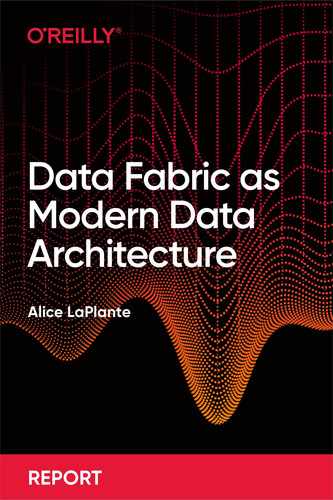Data fabric is a hot concept in data management today. By encompassing the data ecosystem your company already has in place, this architectural design pattern provides your staff with one reliable place to go for data. In this report, author Alice LaPlante shows CIOs, CDOs, and CAOs how data fabric enables their users to spend more time analyzing than wrangling data. The best way to thrive during this intense period of digital transformation is through data. But after roaring through 2019, progress on getting the most out of data investments has lost steam. Only 38% of companies now say they've created a data-driven organization. This report describes how a data fabric can help you reach the all-important goal of data democratization.
Table of Contents
- Introduction
- 1. Why Build a Data Fabric?
- 2. What Is a Data Fabric?
- 3. How to Get Started
- Five Pieces of Advice for Getting Started on a Data Fabric
- One: Virtualize, Don’t Centralize, Your Data
- Two: Build an Intelligent Data Fabric by Integrating AI into It
- Three: Automate Virtualization of Your Streaming Data
- Four: Create a Data-As-A-Service Offering for Your Users
- Five: Create and Nurture a “Data Curation” Culture
- Best Practices When Managing and Growing Your Data Fabric
- Embrace Technology Evolution and Convergence
- Make Sure Your Data Fabric Is Truly Holistic
- Support Today’s Distributed Data Analytics Topology
- Augment Your People Using AI and ML
- Keep It Open and Flexible
- Design It for Easy Decoupling and Layering
- Migrate Intelligently
- Don’t Over-Innovate
- Keep Your Processes Standard
- Conclusion: It’s Time to Act
